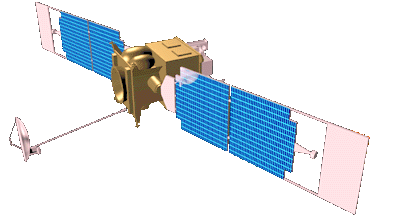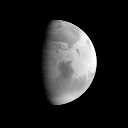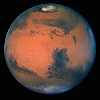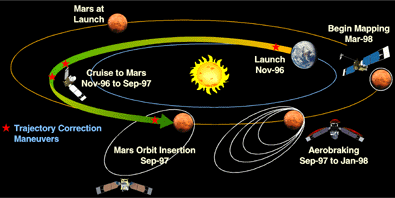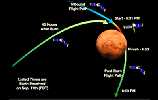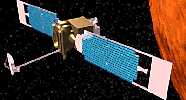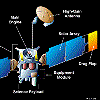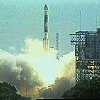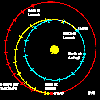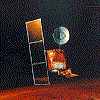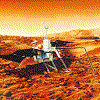
A (44 KBytes)

B (272 KBytes)

C (268 KBytes)
|
Tithonium/Ius Chasmata (Orbit 13, Image 3)
On October 3, 1997, the MOC acquired this image of the western Tithonium
Chasma/Ius Chasma portion of the Valles Marineris, centered at 6.6°S,
90.4°W, at 1:16 PM PDT. Although the lighting beneath the spacecraft
was very poor, the camera was canted towards the sun, and the illumination
was equivalent to roughly 5 PM local time (the sun was about 17° above
the horizon). In the image, the canyon floors are mostly shadowed, but
steep slopes in the area are exquisitely highlighted.
The area outlined in (A), the highest resolution view of the region
previously available, is 6.6 km (4 miles) wide by 55.6 km (34.5 miles)
long. The ridges to the north and south are about 4000 m (13,000 feet)
above the floor of the troughs, but in the area photographed, the relief
is slightly lower (about 3000 m, or 10,000 feet). The top portion of the
image is shown in (B), and a section of that image is shown enlarged in
(C). The scale is 6.45 m/pixel across the image by 9.65 m/pixel down the
image.
Most remarkable about the MOC image is the discovery of light and dark
layers in the rock outcrops of the canyon walls. In the notable, triangular
mountain face [center of (B) and at the top of (C)), some 80 layers, typically
alternating in brightness and varying in thickness from 5 to 50 meters
(16 to 160 feet), are clearly visible. This shear mountain cliff, over
1000 m (3200 ft) tall, is only one of several outcrops that, together,
indicate layering almost the entire depth of the canyon.
This type of bedrock layering has never been seen before in Valles Marineris.
It calls into question common views about the upper crust of Mars, for
example, that there is a deep layer of rubble underlying most of the martian
surface, and argues for a much more complex early history for the planet.
Malin Space Science Systems and the California Institute of Technology
built the MOC using spare hardware from the Mars Observer mission. MSSS
operates the camera from its facilities in San Diego, CA. The Jet Propulsion
Laboratory's Mars Surveyor Operations Project operates the Mars Global
Surveyor spacecraft with its industrial partner, Lockheed Martin Astronautics,
from facilities in Pasadena, CA and Denver, CO. |
